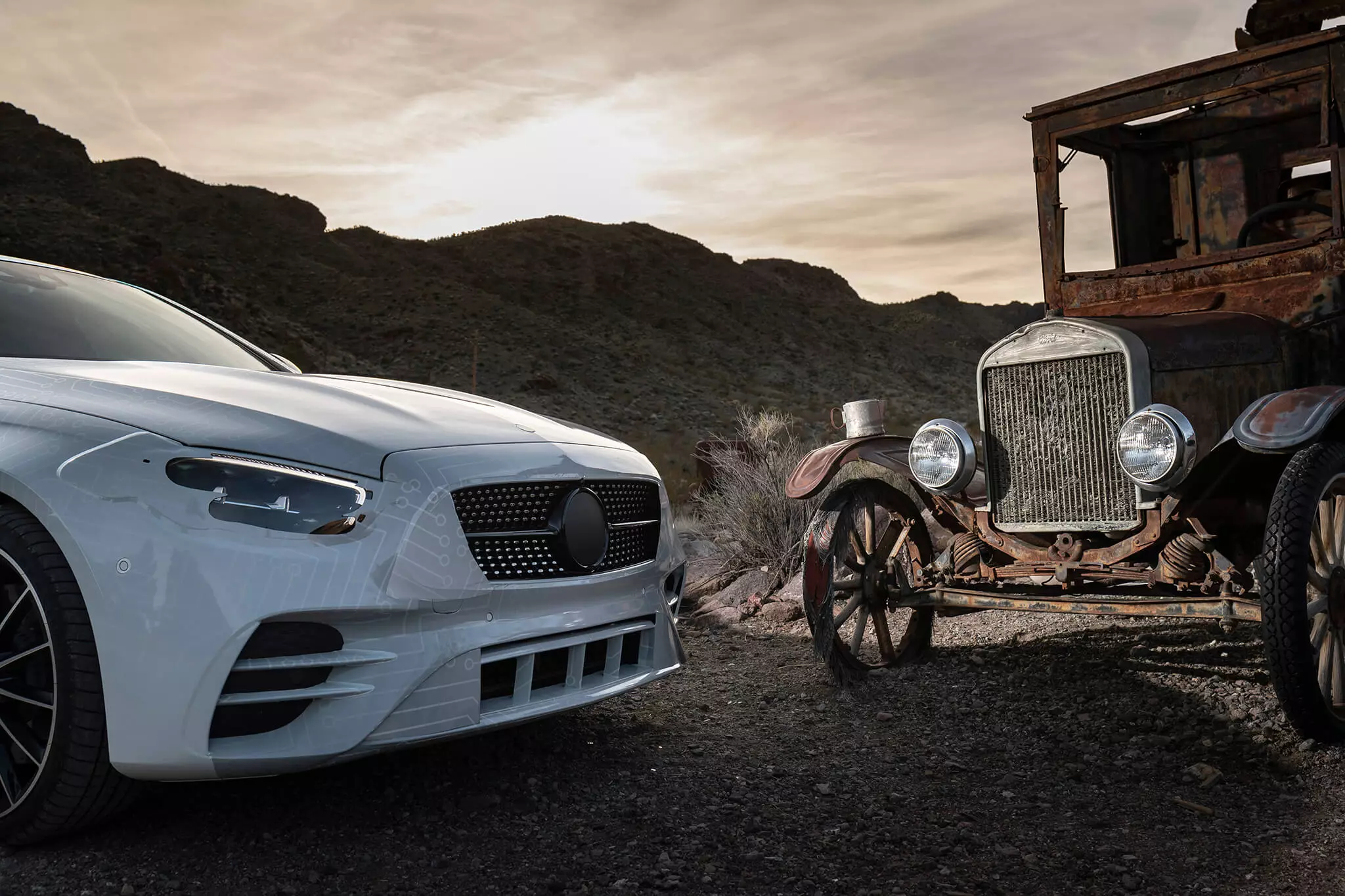Many of the technical details of the renovated Mercedes-Benz E-Class they are still secret, but we managed (only nationally) to get in the car and take a ride in the state of Nevada (USA), led by the chief engineer of the E family, Michael Kelz, who told us all about the main changes to the new model. .
More than 14 million units sold, since 1946, make the E-Class the best-selling Mercedes range ever, due to the fact that it is in the middle, between the C and the S, pleasing a greater number of customers around the world. .
Exterior changes more than usual
The 2016 generation (W213) arrived full of innovations, from the interior with digital instrumentation screens to very advanced driver assistance systems; and this mid-life renewal brings more visual changes than is normal in a facelift: bonnet (with more ribs), “scrambled” tailgate and completely redesigned optics, front and rear.
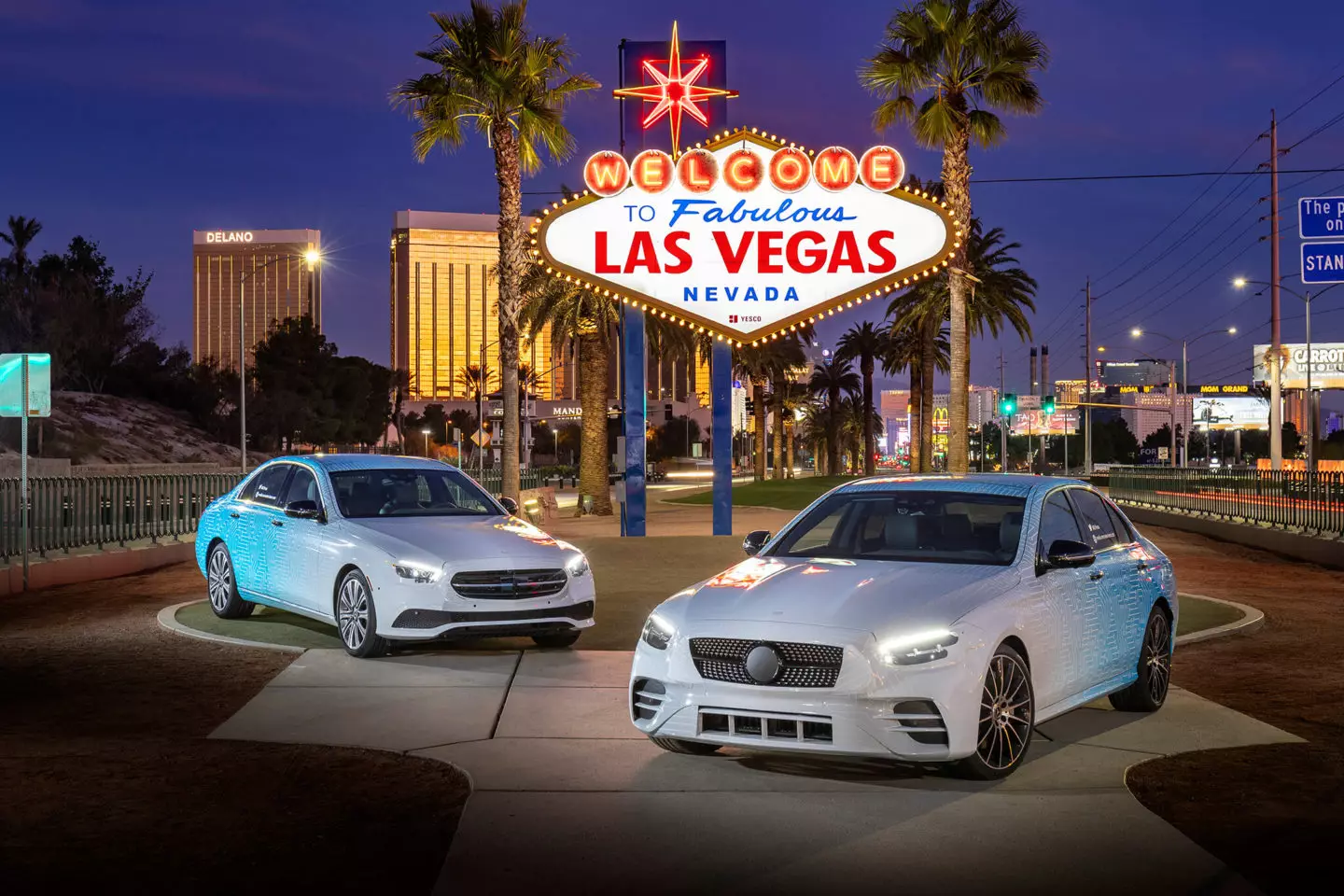
What happens in Vegas, (not) stays in Vegas
Only further to the Geneva Motor Show, in March, will you be able to see all the differences, given that these first units to roll in tests, with a restricted group of journalists worldwide, are very well “disguised”.
Subscribe to our newsletter
Mercedes-Benz took advantage of the fact that it even had to “tweak” more than usual in the design (front and rear sections), because the arsenal of equipment of the driver assistance systems was greatly reinforced, receiving specific hardware that was installed in these zones.
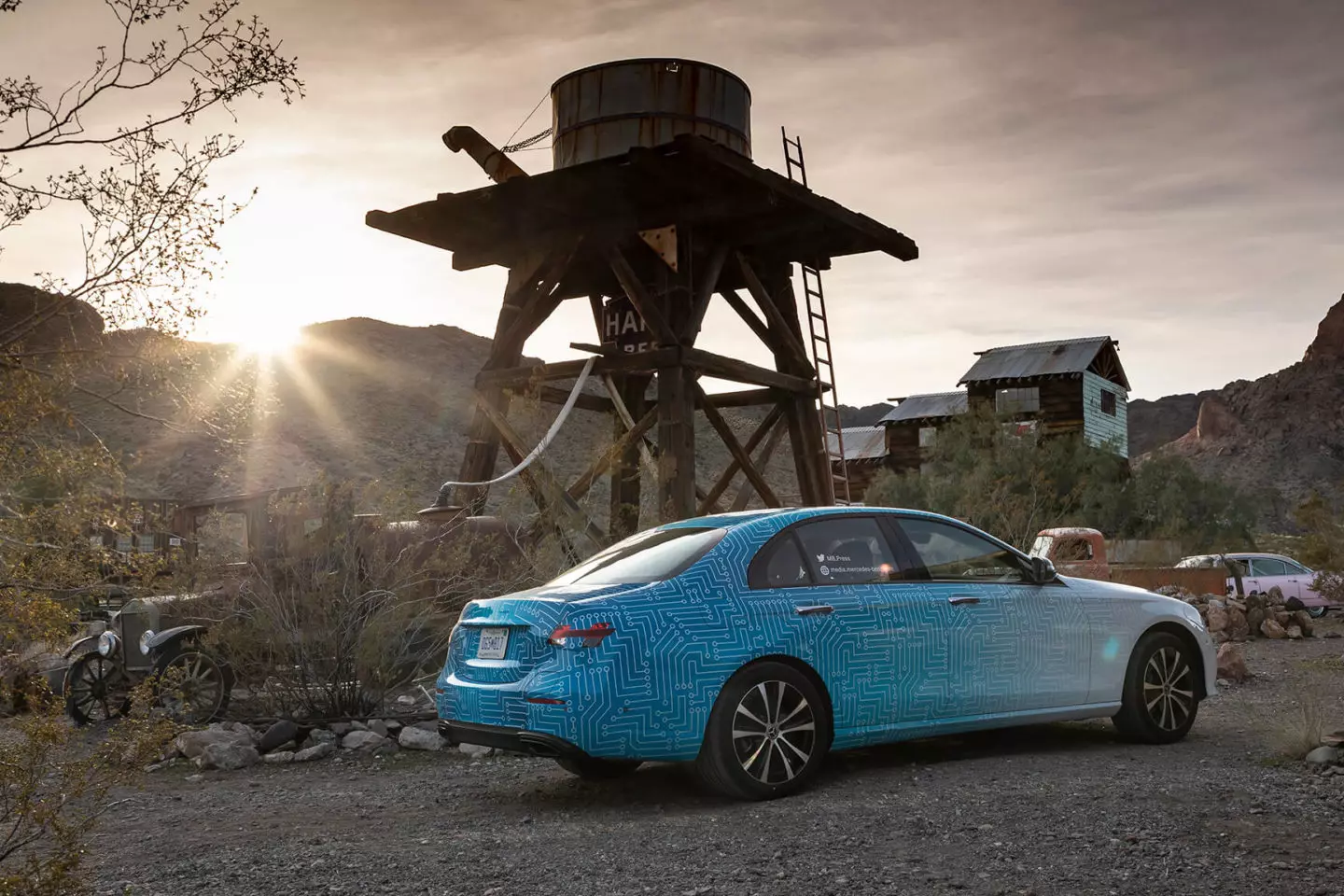
This is the case of the parking system (Level 5) which now integrates the images collected by the camera and the ultrasonic sensors so that the entire surrounding area is scrutinized (so far only sensors were used), as explained by the chief engineer, Michael Kelz:
“The function for the user is the same (the car enters and leaves the parking space in automatic mode), but everything is processed faster and more fluidly and the driver can touch the brake if he thinks the maneuver is being too fast , without the operation being interrupted. The fact that the system now “sees” the markings on the floor improves a lot and the maneuver is carried out in correlation with them, whereas in the previous generation only the cars between which it was going to be parked were taken into account. In practice, this evolution means that the system will be used much more than in the previous system, which was slow and made more maneuvers to park the car”.
And the interior?
Inside, the dashboard was maintained, with new colors and wood applications, with the new steering wheel being the main novelty. It has a smaller diameter and a thicker rim (ie it's sportier), whether in the standard version or the AMG (but both have the same diameter).
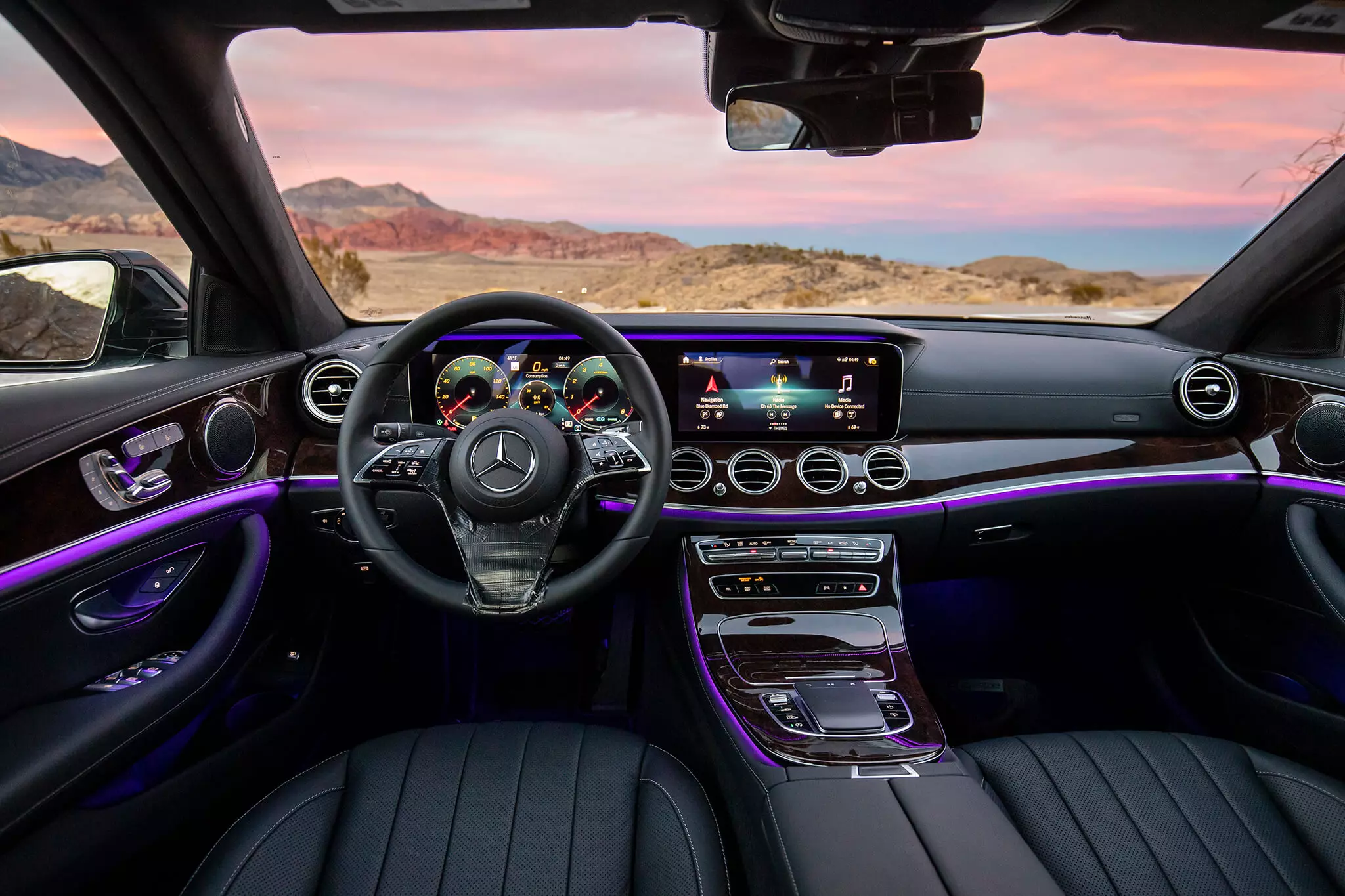
The other novelty is the existence of a wireless charging base for smartphones, which is a constant in every new car that hits the market (in whatever segment it is).
At the wheel? Not yet…
While driving on the nearly deserted roads around Las Vegas, the chief engineer explains that “the chassis changes boil down to retuning the air suspension and reducing the Avantgarde version's ground height by 15mm — which is now be the entry-level version (the base version that had no name disappears) — with the objective of improving the aerodynamic coefficient and, therefore, contributing to a reduction in consumption”.
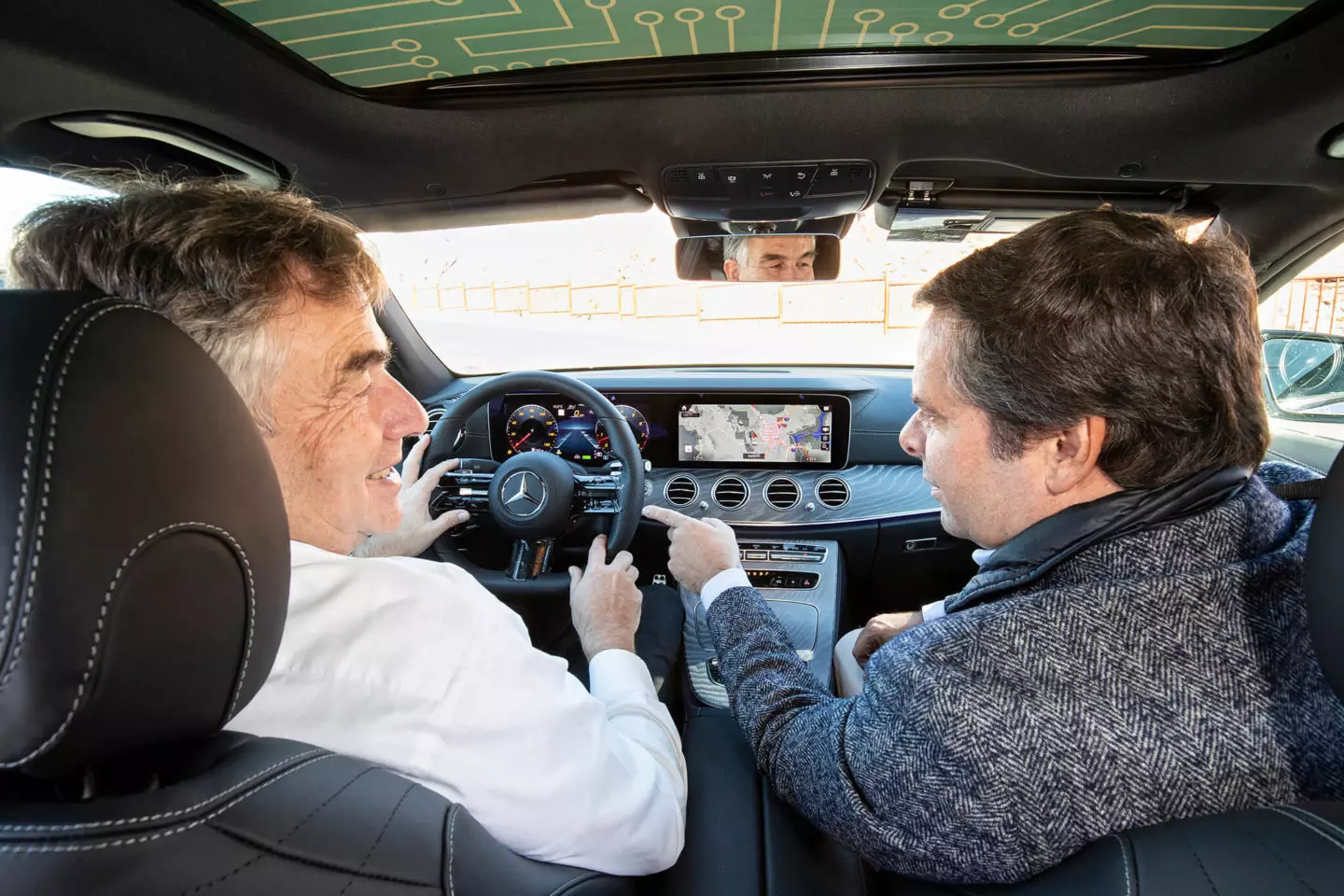
Chatting with Michael Kelz, chief engineer of the E-Class, to try and discover all the news for the renovated E-Class
All new is the 2.0 l four-cylinder gasoline engine. where we're taking this “ride” (but not the one applied to the plug-in hybrid propulsion system) with the man who knows the E-Class like the back of his hand. “It's called M254 and it has a starter/alternator motor (ISG) powered by a 48 V system, in other words, similar to the six-cylinder system (M256) that we already have in the CLS”, explains Kelz.
Even though the numbers are not yet approved, the final performance of the propulsion system is 272 hp , 20 hp more from the ISG, while peak torque reaches 400 Nm (2000-3000 rpm) in the combustion engine, which is combined with an electric “push” of 180 Nm and which is especially felt during speed resumptions.
The new Mercedes-Benz E-Class shows enormous ease in raising the speeds as a result of the good level performance in very early regimes, while at the same time it is perceived that the cooperation work with the nine-speed automatic transmission, even if this unit is still one of the final development work.
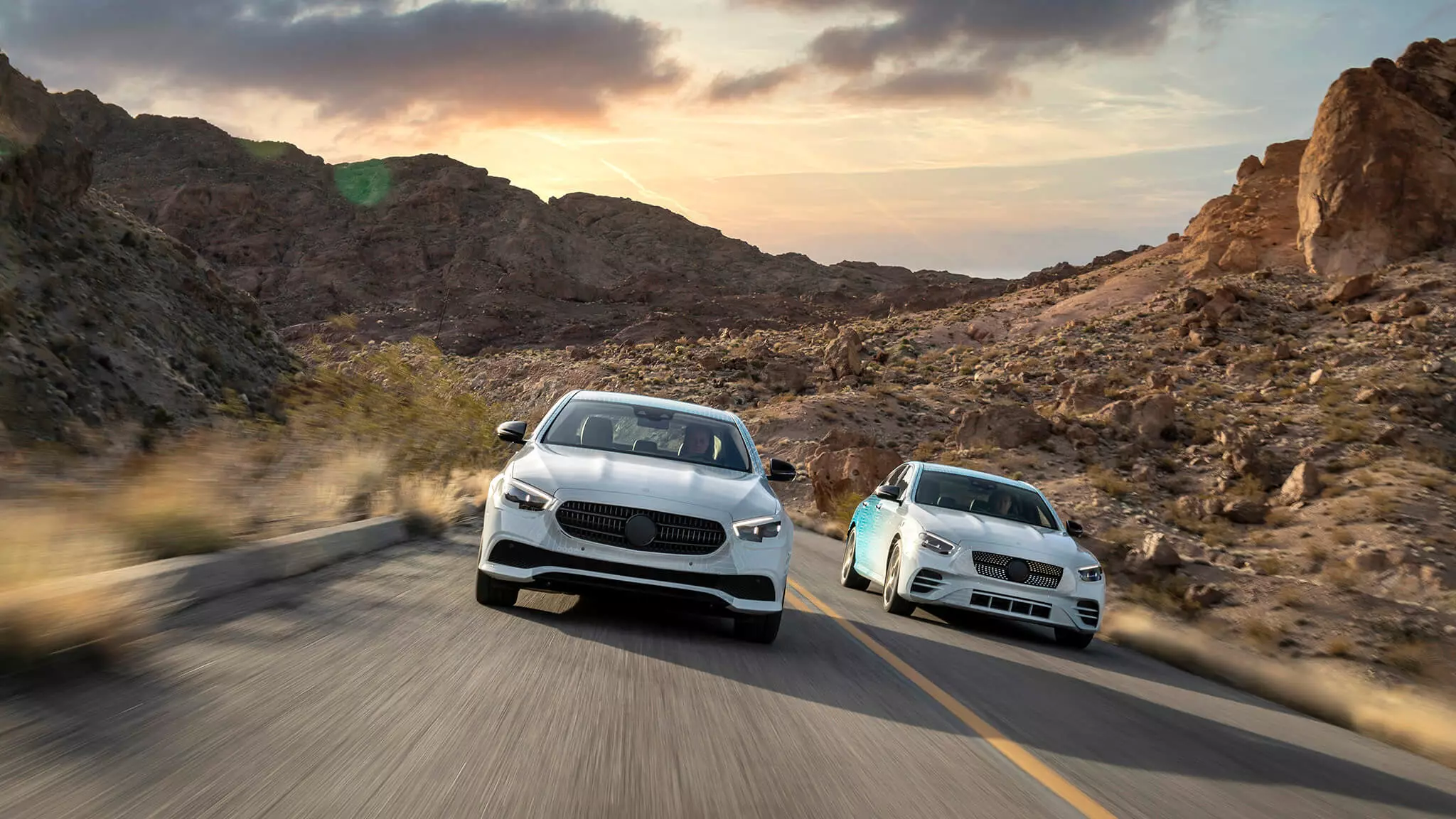
Rolling comfort is what's known on the E and we can expect very similar reactions in dynamic terms, taking into account that neither the weight nor the dimensions of the car (nor the chassis settings as we've already seen) change significantly and as much as possible. -you will feel a little more stability, given the 15 mm suspension height reduction.
Up to seven plug-in hybrid variants
The plug-in hybrid system is the same as the C, E and S classes, the novelty here being the fact that the hybrids with external recharging can be four-wheel drive cars, while in the E-Class, which is still sold, the plug-in hybrid in only existed with rear wheel drive.
The electric autonomy, of 50 km, remained unchanged, which is understandable because the battery is the same (13 kWh), but leaves the new E (which will have seven PHEV variants in the different bodies) at a disadvantage compared to other hybrids of the (own) German brand that remain very close to 100 km of autonomy on a single full battery charge. Among them is the E-Class plug-in that is sold in China: it has a larger battery and manages to reach almost 100 km of autonomy.

EQE, another electric SUV?
I didn't want to pass up the opportunity to try to find out more about the offer of electric models — EQ family — at Mercedes-Benz for the next few years, especially since Michael Kelz is also one of the directors of this line of vehicles. Mainly out of curiosity about what will be the offer of trams precisely in the E segment, since Mercedes has the EQC (C range), will it have the EQA (Class A) and then what?
Kelz, smiles, apologizes for his interest in keeping his job for a few more years and therefore not being able to make any bombastic revelations, but he always leaves a tip:
"There will be an electric vehicle in this class, that's for sure, and if we take into account that it should be a form of car that is as global as possible, and that has a luggage compartment with good volume, it might not be difficult to guess what's next …"

Translation: it won't be a van or a coupe that's too limiting in terms of market and customer coverage, it won't be a sedan because the large battery and components would limit its functionality and, therefore, it will be an SUV or crossover, which appeals to " Greeks and Trojans”.
It will be important that the "EQE" can use a specific platform for electric vehicles , something that Michael Kelz confirms with a nod and a smile, as opposed to what happened with the EQC, done on the very flexible base of the GLC.
This is the cause of some space constraints, either due to the existence of a massive floor tunnel in the second row of seats, or the large central bridge connecting the front seats and the dashboard, in both cases already “hollow” structures. that there is neither a transmission shaft passing engine torque to the rear axle nor a huge transmission “glued” to a combustion engine at the front.
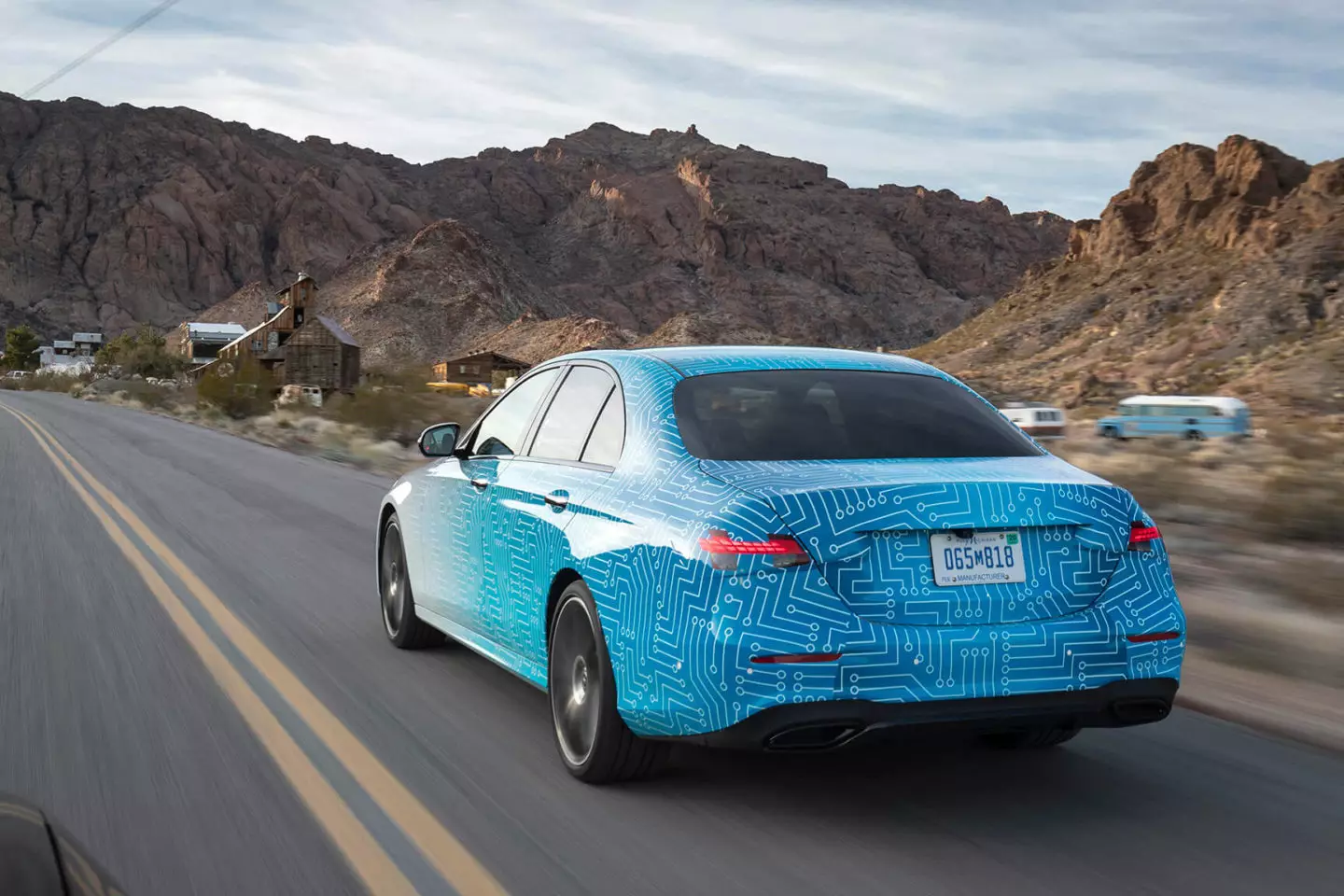
As for the question whether it is the same platform as the EQS (the S-Class electric model, scheduled for launch in the summer of 2021), Kelz avoids answering, but always admits that it is a “scalable…” platform. Nor could it be otherwise, because this future platform — which is called Electric Vehicle Architecture II, when the GLC was I, still with commitments. For good understanding...
Geneva, the stage where it will be unveiled
The 2020 Mercedes-Benz E-Class will only “uncover”, so at the end of February/early March, sales will begin in midsummer, in the case of the sedan and the van/Allterrain (whose rear changes less than in three-volume bodywork), which are produced in Sindelfingen. Even before the end of the year, it will then be the turn of the coupé and cabriolet to line up with the first two bodies.
